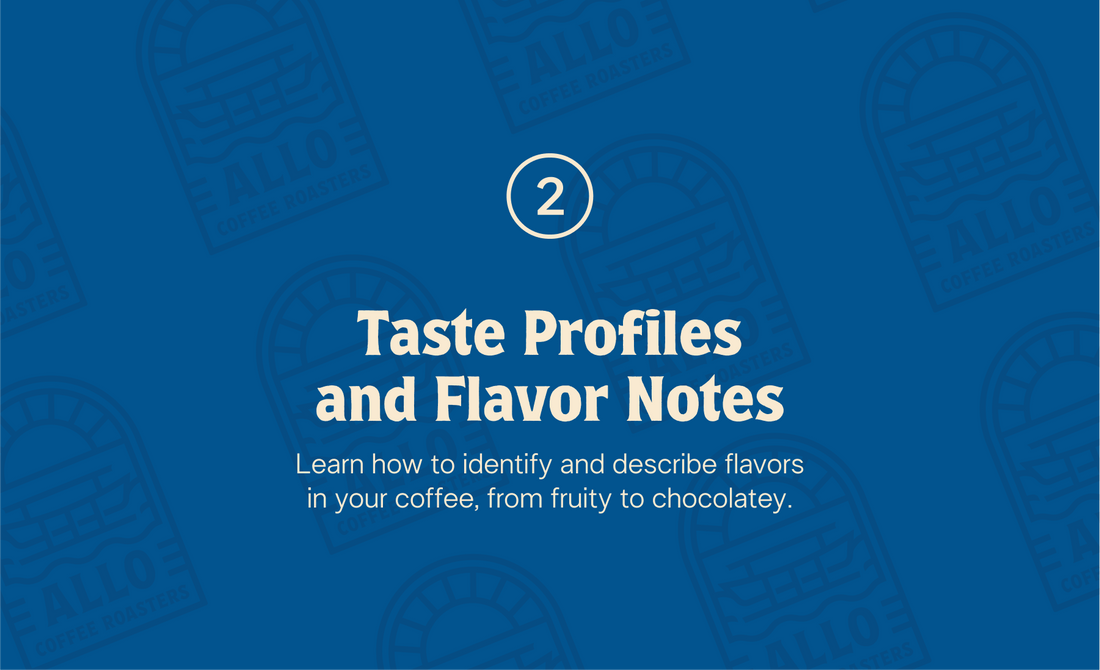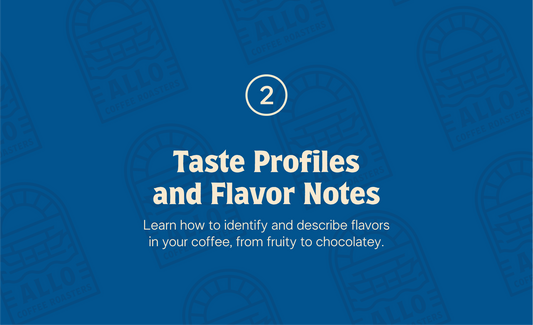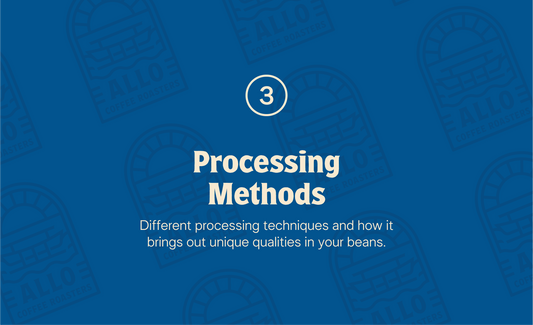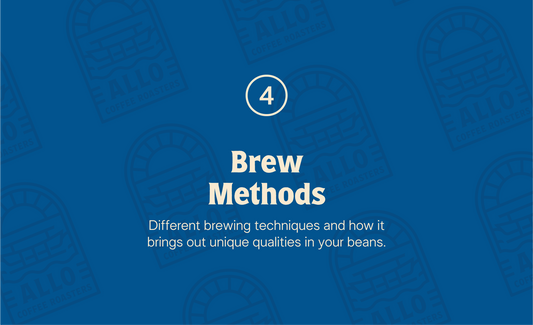In our first educational blog 'Coffee Origin and Composition,' we very much discussed, in a scholarly fashion, the differences between locally and internationally grown coffee along with a brief mention of regions. We talked about how Single Origin beans tend to have a dominating taste profile, which leads some to prefer Blends to balance everything out. Today, we will discuss Taste Profiles and Flavor Notes. Let us begin.
Taste Profiles
When I was a young boy, my father took me into the city to see the grand opening of his friend's newly opened cafe. It closed down in 7 months because, turns out, it was a front for money laundering. But the coffee was actually good, and that Mocha Latte at 12 years old made me the coffee connoisseur I am today. Anyway.
Roasters usually categorize flavors by:
- Floral & Tea-like
- Fruity & Citrusy
- Nutty & Earthy
- Spicy
- Sweet & Dessert-like
As per our last blog, we talked about how different regions ended up with unique flavors and nuances in their coffee precisely because of the differences in how and where they're grown. And that's not even everything. It's one thing to grow a bean, another to process and brew it, but we'll get there. Together.
Floral & Tea-like: These coffees often have delicate, fragrant notes reminiscent of jasmine, chamomile, or even green tea. They tend to be light-bodied and bright, perfect if you want something refreshing and subtle.
Fruity & Citrusy: Think berries, citrus fruits like lemon or orange, and sometimes tropical fruits like mango or pineapple. These coffees pop with lively acidity and sweetness, giving you a vibrant, juicy cup.
Nutty & Earthy: These coffees feel more grounded and comforting. You might taste roasted almonds, hazelnuts, or even a slight earthiness like fresh soil or wood. They’re great if you like a warm, full-bodied cup.
Spicy: This category includes warming notes like cinnamon, clove, or black pepper. These flavors add complexity and a little kick, often found in coffees from certain regions or specific processing methods.
Sweet & Dessert-like: Caramel, chocolate, vanilla, or brown sugar. These flavors make your coffee feel like a treat. They’re smooth and often have a creamy mouthfeel that makes every sip feel indulgent.
It’s okay if you’re not able to tell them apart right away. That’s exactly why cafes and roasters (like us) host tasting events! There, you get to experience these flavors firsthand, train your palate, and discover what really excites your taste buds. Coffee tasting is a journey, not a race, and with every cup, you’ll start picking up new notes and appreciating the subtle differences. It's like adobo, you know? You eat it enough times, you start to notice the differences on how different families and restaurants make them. Some add vinegar, some add cola. Personally, I put sinigang mix. I will not explain.
Flavor Notes

This is pretty simple, actually. So, Taste Profiles are broad categories that describe the overall character of a coffee right? Fruity, nutty, floral, or spicy. They give you a general idea of what to expect in terms of flavor style. Flavor Notes are the specific, detailed flavors you might actually pick up like blueberry, caramel, cinnamon, or dark chocolate. They’re the individual 'ingredients' that make up the bigger taste profile. That's why you'll see in our coffee bean descriptions foods like Peanut Brittle (Hammerhead Blend) or Black Forest Cake (First Tide Blend).
Taste Profiles are Music Genres, Flavor Notes are the Instruments
Think of it like, not adobo, but like music genres. You know it's jazz, and you can clearly hear the saxophones, the drums, the vocals, and all that. It's exactly like that. Well, of course there's not actually peanut butter or cake in our beans, but I think the point still stands. The flavor notes written on the description are just the notes that the roaster perceives, but flavor notes are all subjective and will differ from person to person!
Allo, Out! Again.
Wow, we really hope this helped. If it didn't, feel free to chat us. We do our best to make specialty coffee fun, accessible, and less scary for everyone, so it matters to us if what we say or do doesn't align with our mission. If we got anything wrong, we'd also appreciate it if you reached out to us about it. So, yeah. Thanks for reading.
Now, you know how Coffee Origin and Composition affect its Taste Profile. The last thing you'll have to learn is how it's Processed and Brewed. But remember, coffee tasting isn't a race, a marathon, or whatever else. It's just a fun, yummy thing. It's nice for you to understand why it's delicious in the first place, but we hope that you won't get too caught up in becoming a "coffee expert.” You’re allowed to just enjoy it, to just nod and say "Yum." Whether you taste hints of blueberry or just think it “tastes like coffee,” that’s valid.




